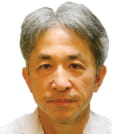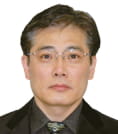[Opt Bio] Year Started : 2017
Yoshikazu Isomura
Optosynaptology to clarify fast neural signaling among multi-brain regions and connectivity
Research Director
Yoshikazu Isomura

Professor
Medical and Dental Sciences,
Tokyo Medical and Dental University, Graduate School of Medical and Dental Sciences,
Collaborator
| Toshihisa Ohtsuka | Professor Graduate Faculty of Interdisciplinary Research University of Yamanashi |
| Ayako M. Watabe | Professor Institute of Clinical Medicine and Research, Research Center for Medical Sciences The Jikei University School of Medicine |
Outline
Our research goal is to establish a ‘next generation Multi-Linc method’ by improving spatial and temporal accuracy to identify axonal projections of recorded neurons in several brain areas utilizing spike collision. To this end, Ohtsuka lab and Watabe lab will develop and evaluate optogenetically photo-activating and photo-inactivating molecular tools which are expressed specifically at presynaptic terminals. Isomura lab will install these optogenetic tools in the Multi-Linc system to elucidate inter-areal spike communication in behaving animals with high spatiotemporal resolution. These optogenetic tools will also be useful for wide range of neuroscience such as molecular mechanism of synaptic transmission and circuit mechanism of emotional behaviors.
Takeaki Ozawa
Analysis of cell response dynamics in deep tissues of living animals based on quantitative light control and measuring techniques
Research Director
Takeaki Ozawa

Professor
Graduate School of Science
The University of Tokyo
Collaborator
| Itaru Imayoshi | Professor Graduate School of Biostudies Kyoto University |
| Kazuo Emoto | Professor School of Science The University of Tokyo |
| Hiroyuki Kubota | Professor Medical Institute of Bioregulation Kyushu University |
| Rintaro Shimada | Assistant Professor College of Science and Engineering Aoyama Gakuin University |
Outline
We will develop novel technologies to quantitatively control gene expression, growth factor, kinase and cell membrane receptor activity by near infrared light for the purpose of analyzing spatiotemporal dynamics of cellular responses in deep tissues of living animals. We will construct a platform to detect the output signals by fluorescence, emission and Raman scattering simultaneously with light stimulation. We then aim to apply the technologies to elucidate the mechanism of dynamic metabolic regulation and neural stem cell differentiation in living mice.
Hideki Kandori
Optical control of intracellular second messengers
Research Director
Hideki Kandori

Professor
Graduate School of Engineering
Nagoya Institute of Technology
Collaborator
| Akihisa Terakita | Professor Graduate School of Science Osaka Metropolitan University |
| Masahiko Hibi | Professor Graduate Schcol of Science Nagoya University |
| Takahiro Yamashita | Lecturer Graduate School of Science Kyoto University |
Outline
In this project, we aim at developing optogenetic tools to control the concentration of intracellular second messengers by light. The target molecules are microbial and animal rhodopsins, which exhibit photocycle and photoequilibrium, respectively. New rhodopsin functions are discovered from nature or designed by mutation, which will be utilized as novel optogenetic tools. Microbial rhodopsins are used to control intracellular concentrations of calcium ions and cyclic nucleotides directly by light. Novel animal rhodopsins alter intracellularconcentrations of second messengers by activating G-protein signaling cascades. Usefulness of these tools will be evaluated by applying to zebrafish cerebellar function, where effects of light-dependent concentration changes of second messengers will be clarified by the measurements of optokinetic response and conditioned fear response. Consequently, new optogenetic tools of second messengers will demonstrate the potential of light-control by use of rhodopsins.
Masaharu Noda
Elucidation of brain mechanisms for body fluid homeostasis and blood pressure control based on the development of optobiology
Research Director
Masaharu Noda

Specially Appointed Professor
Institute of Innovative Research
Tokyo Institute of Technology
Collaborator
| Masamichi Ohkura | Professor Graduate School of Science and Engineering Kyushu University of Health and Welfare |
| Yasuhiro Kamei | Specially Appointed Associate Professor National Institute for Basic Biology National Institutes of Natural Sciences |
| Hiraki Sakuta | Assistant Professor National Institute for Basic Biology National Institutes of Natural Sciences |
Outline
The brain continuously monitors body fluid (blood, cerebrospinal fluid, etc.) conditions. Based on their information, the brain controls water/salt intakes and blood pressure; however, the mechanisms have not been elucidated in detail. In the present study, we develop new methods for gene expression control by IR light and multi-fiver analyses using photoconvertible-type Ca2+ indicators. We will elucidate brain mechanisms and neural pathways for the control of body fluid homeostasis and blood pressure by combining these methods with specific neural pathway labeling technique.
Hiroaki Wake
Re-wiring neural connections by experimental optical stimulation of the brain
Research Director
Hiroaki Wake

Professor
Graduate School of Medicine
Nagoya University
Collaborator
| Takunori Taira | Project Professor Institute for Molecular Science National Institutes of Natural Sciences |
| Junichi Nabekura | Director General National Institute for Basic Biology National Institutes of Natural Sciences |
| Osamu Matoba | Professor Graduate School of System Informatics Kobe University |
Outline
Human life activities are summarized with the recognition of information from the outside environments to have functional responses. In this research project, combining the holographic projection with high power pulse laser, we optimize the biological application of high-speed stereo light stimulation and realize multipoint fast stimulation of glial cells and neurons / synapses. Using this system, we will try to manipulate higher brain function and artificially manipulate the neural circuit activity necessary for sensory memory and learning in cerebral cortex.
Dai Watanabe
Development and application of optobiological tool for decoding and controlling of brain information in freely behaving animals
Research Director
Dai Watanabe

Professor
Graduate School of Medicine
Kyoto University
Outline
The brain is a complex system consisting of various types of neurons. Furthermore, neuronal properties within a discrete cell type can also be highly heterogenous, because each neuronal connectivity and excitability are adaptively and dynamically changing. To understand the brain functions, which are operated by the interaction among such highly heterogeneous and plastic cell populations, we will develop an advanced endomicroscopy to decode and manipulate brain information with a single-cell resolution, and apply this technology to study neural circuit basis of decision making in a freely behaving state.













